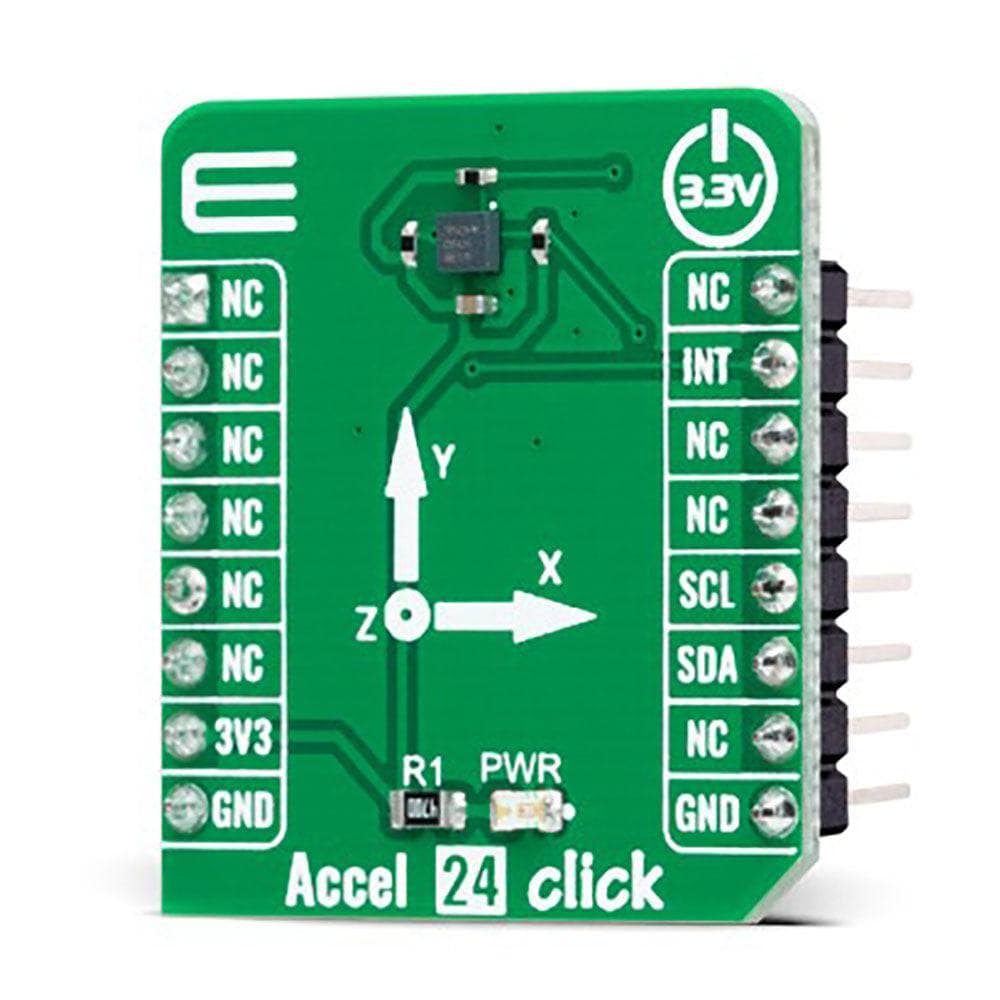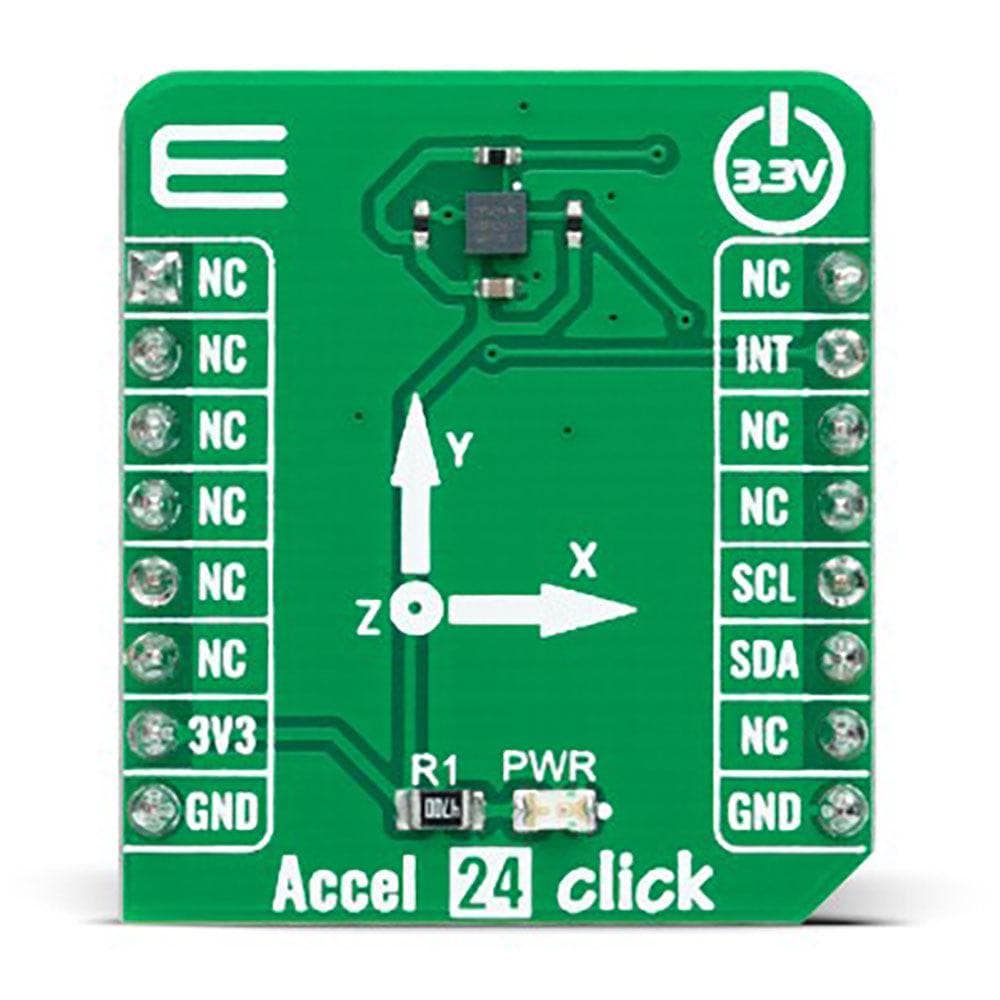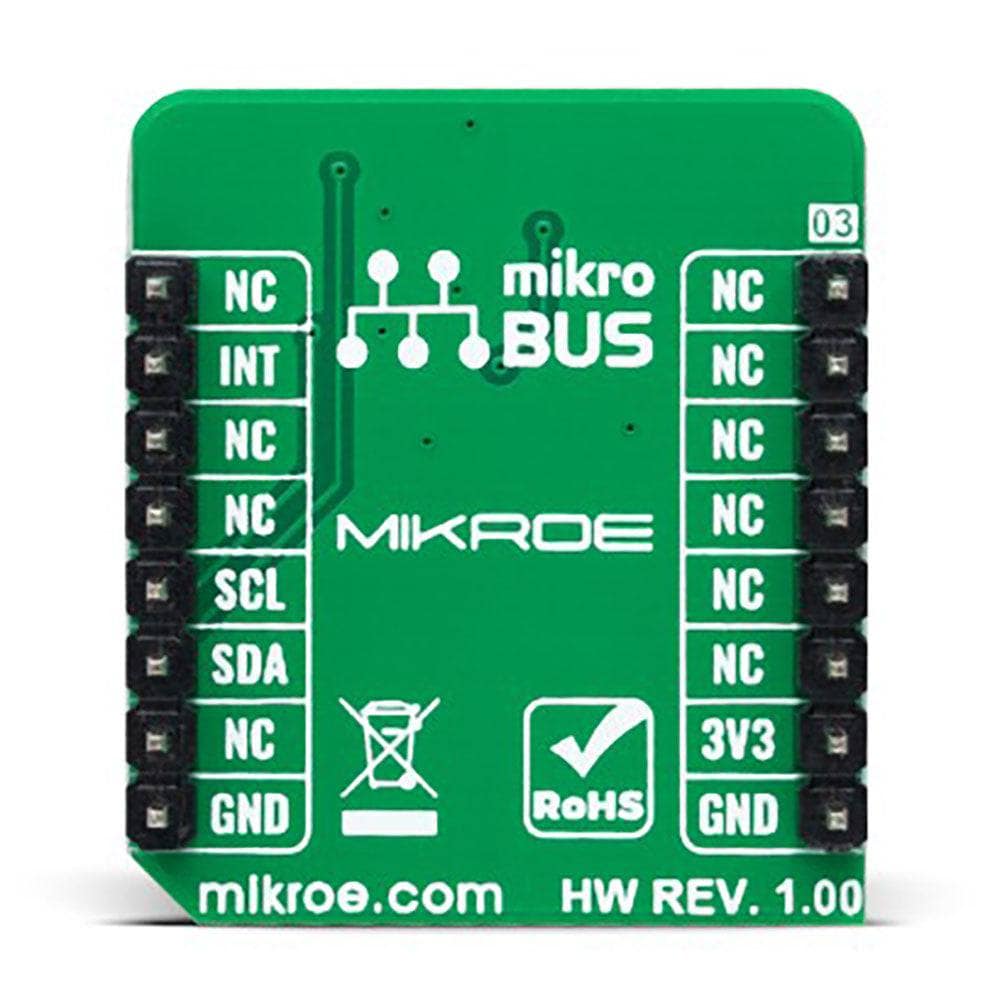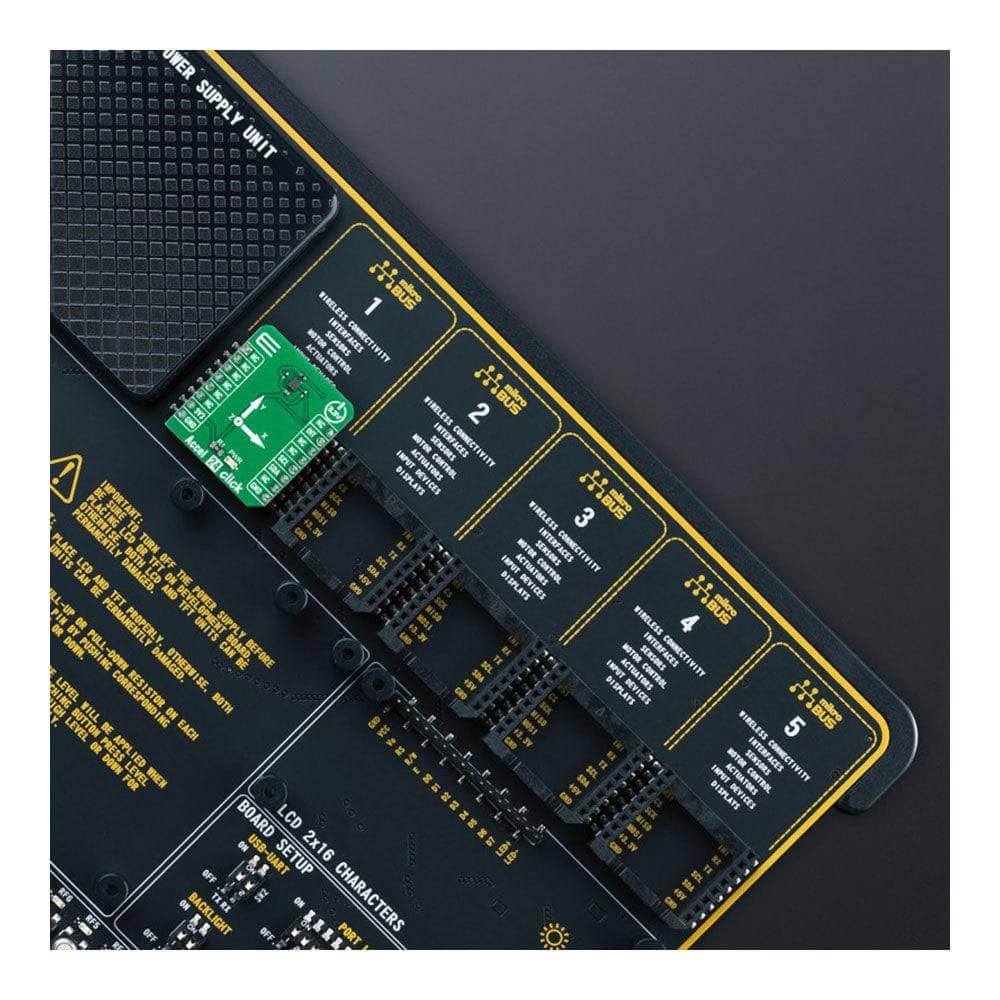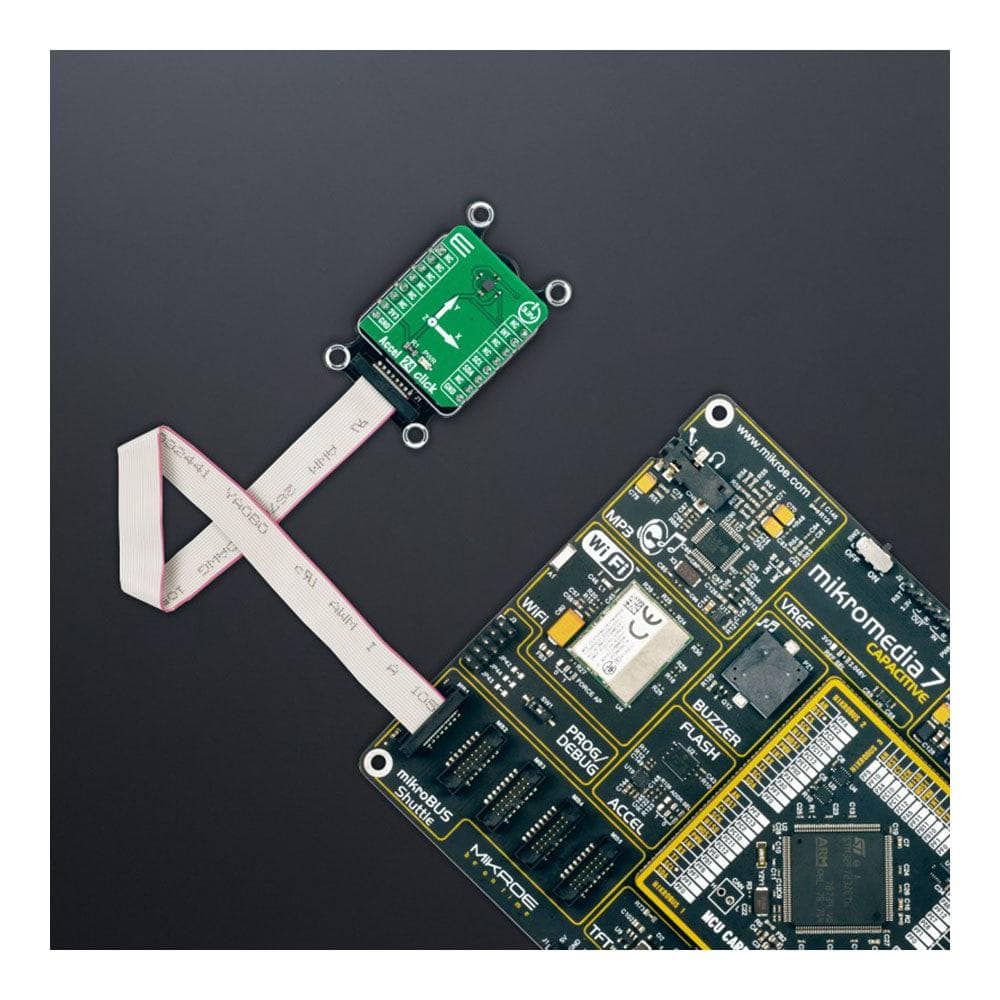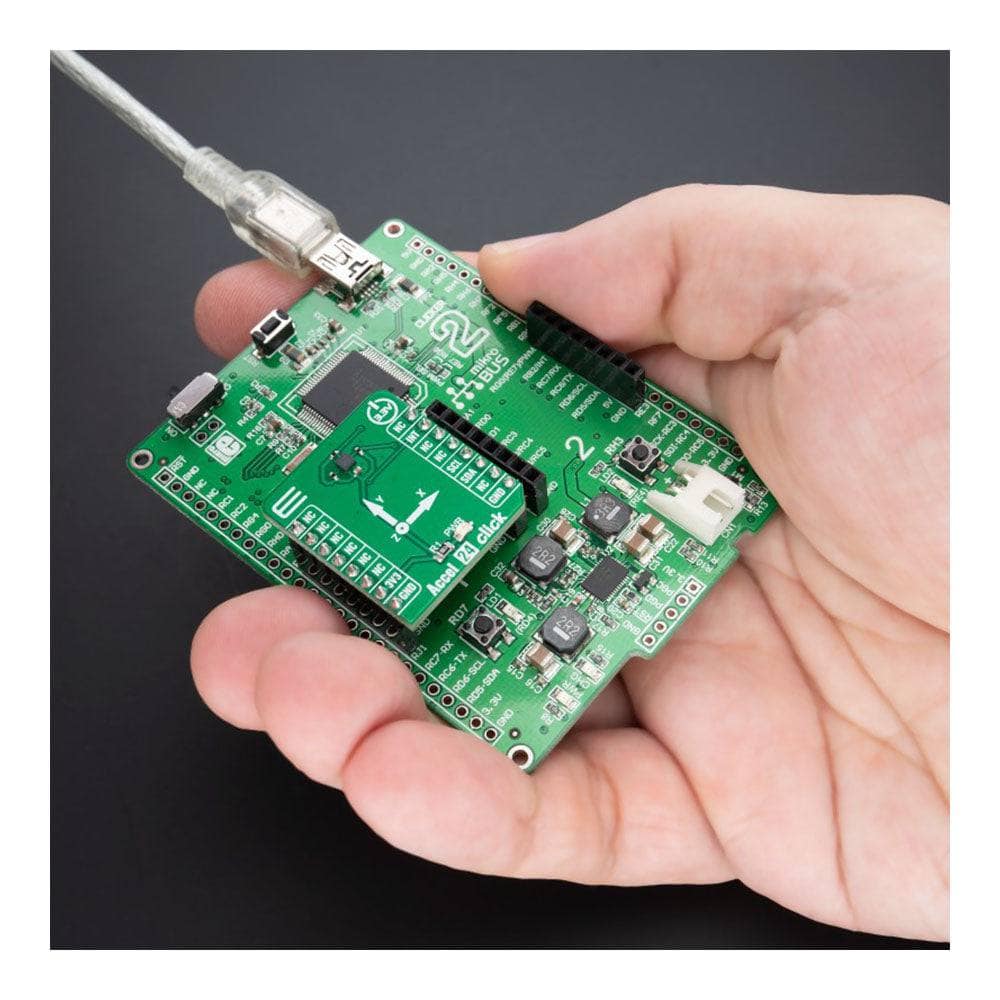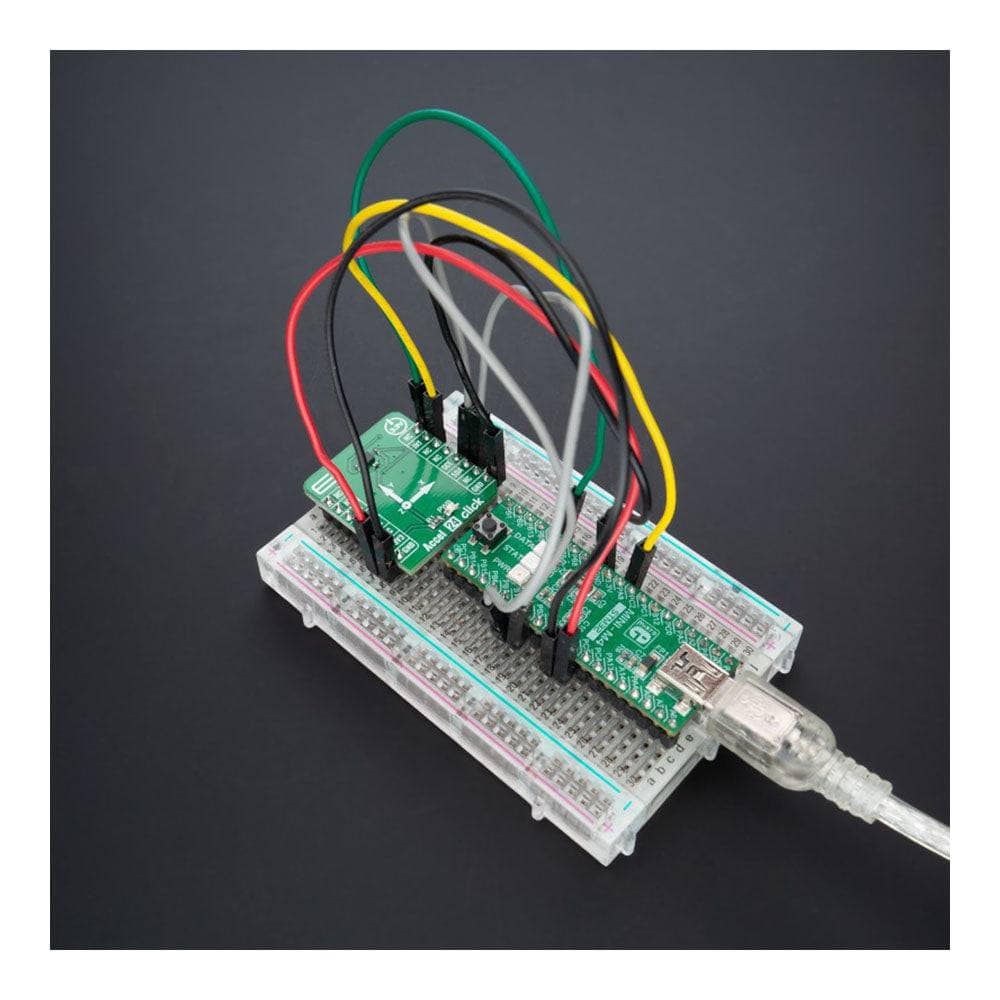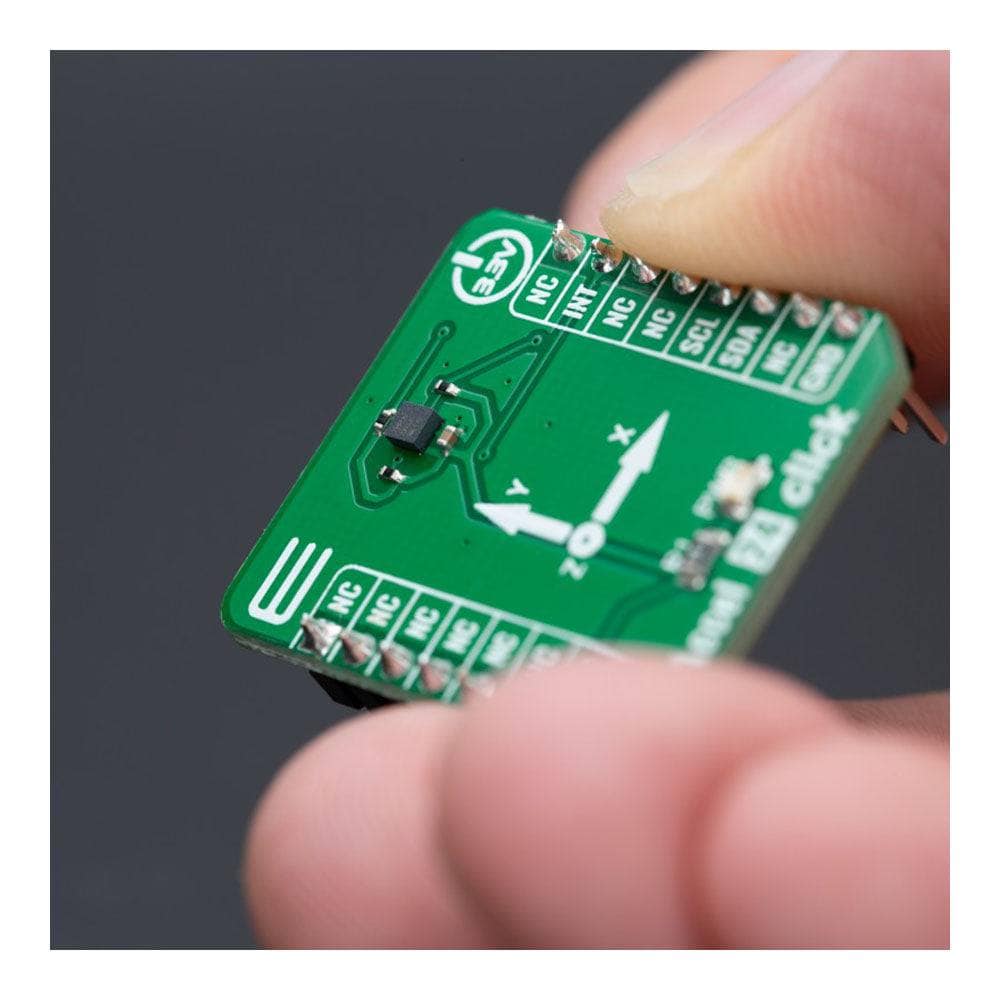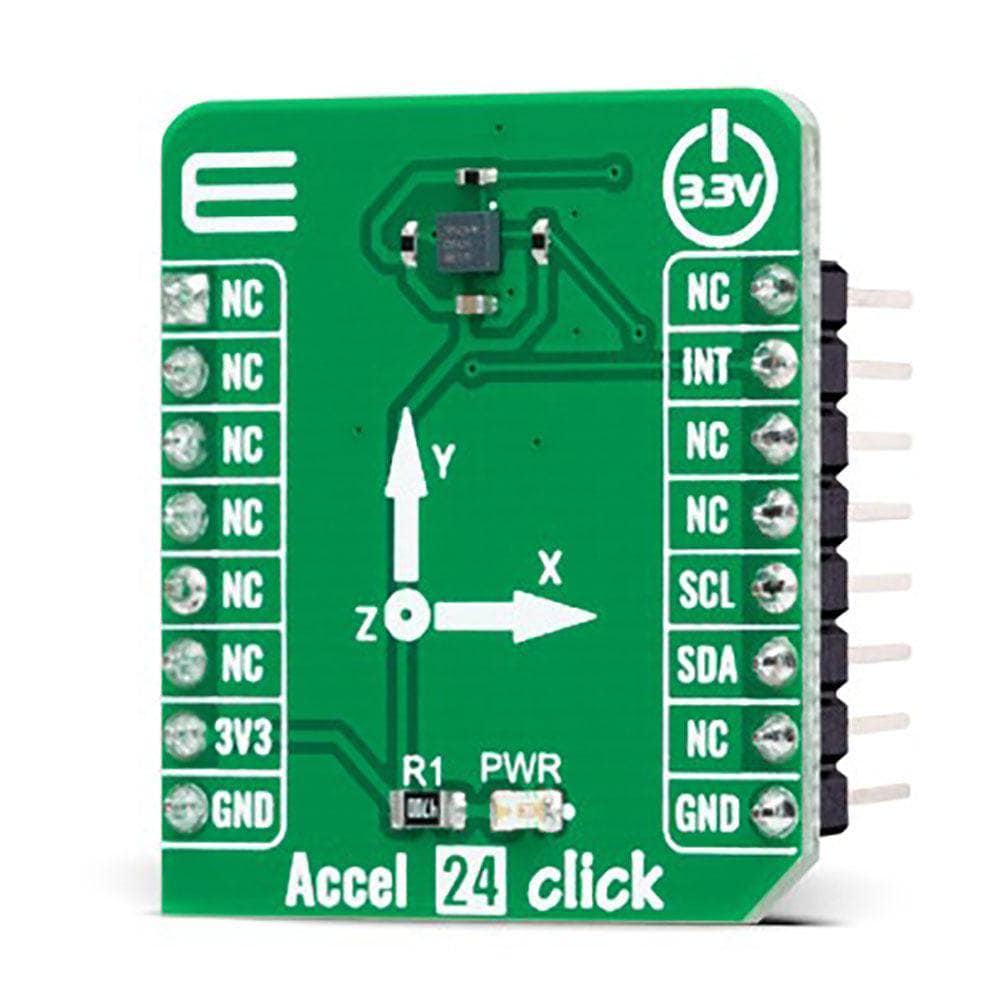
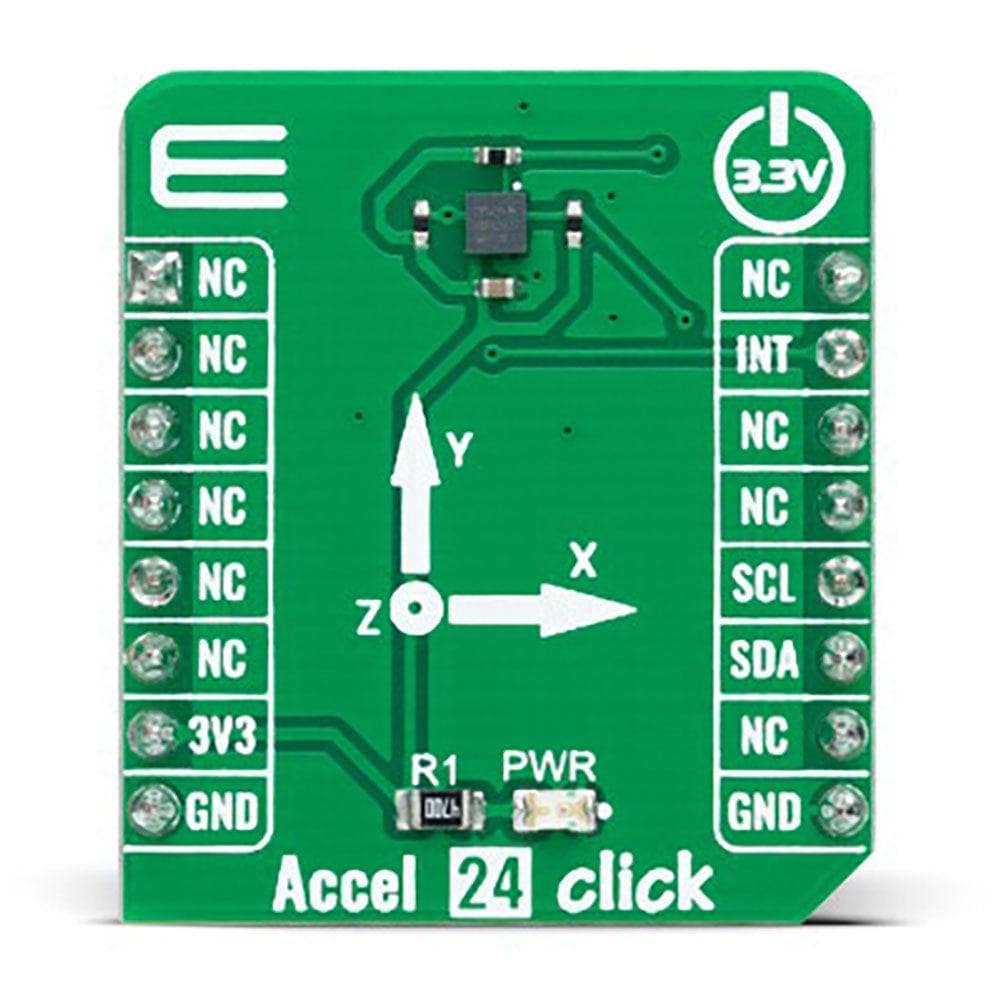
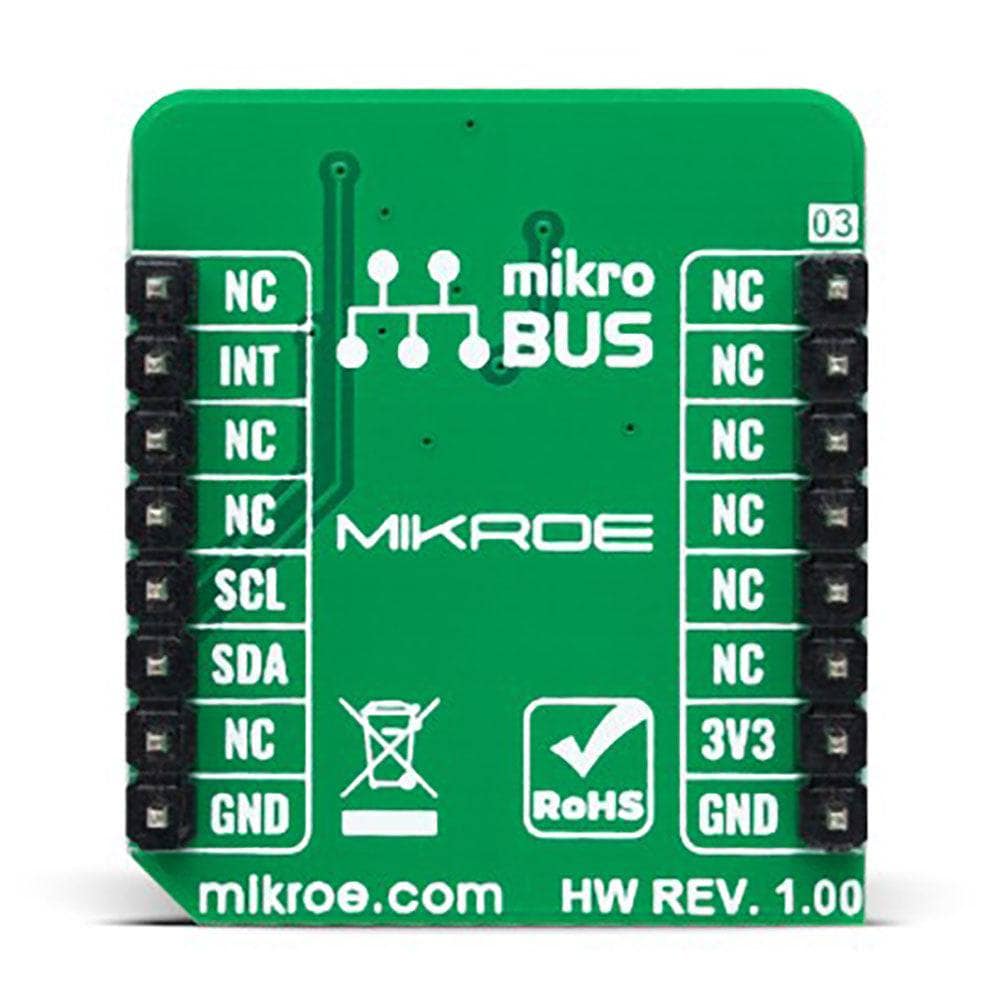
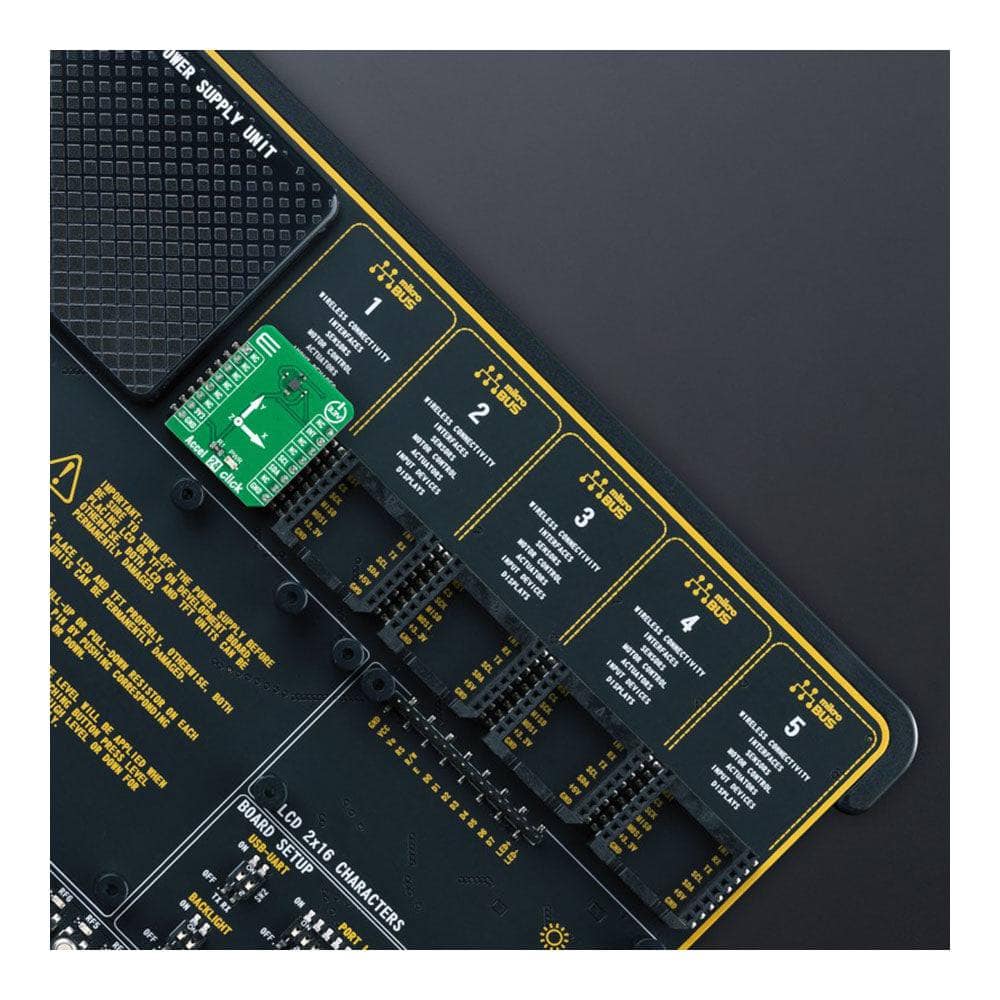
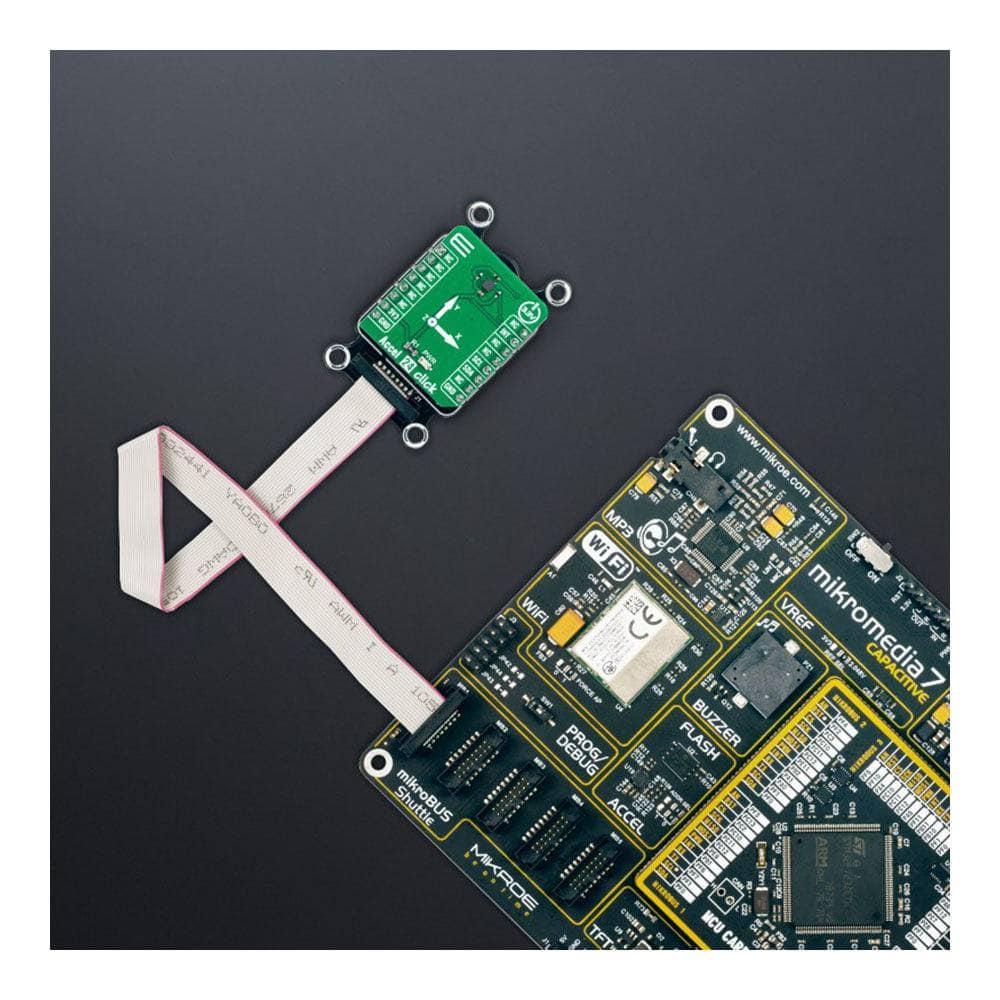
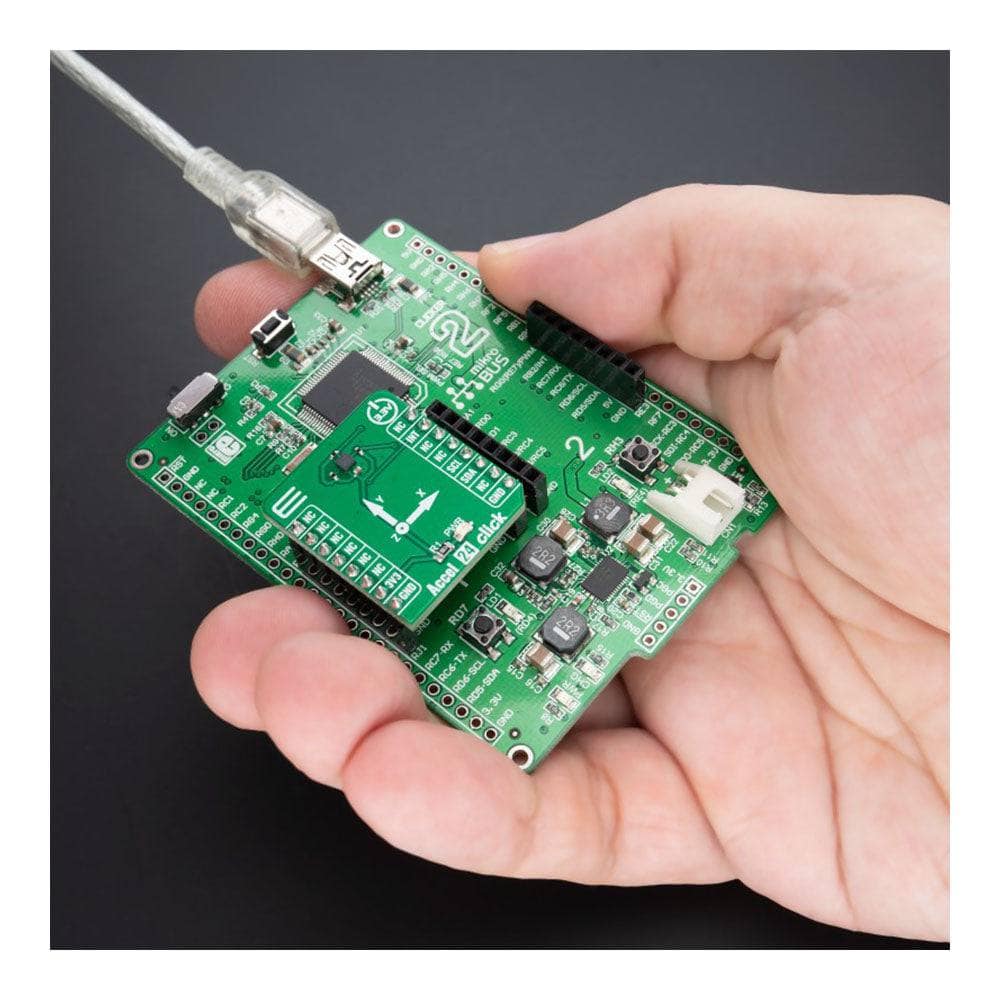
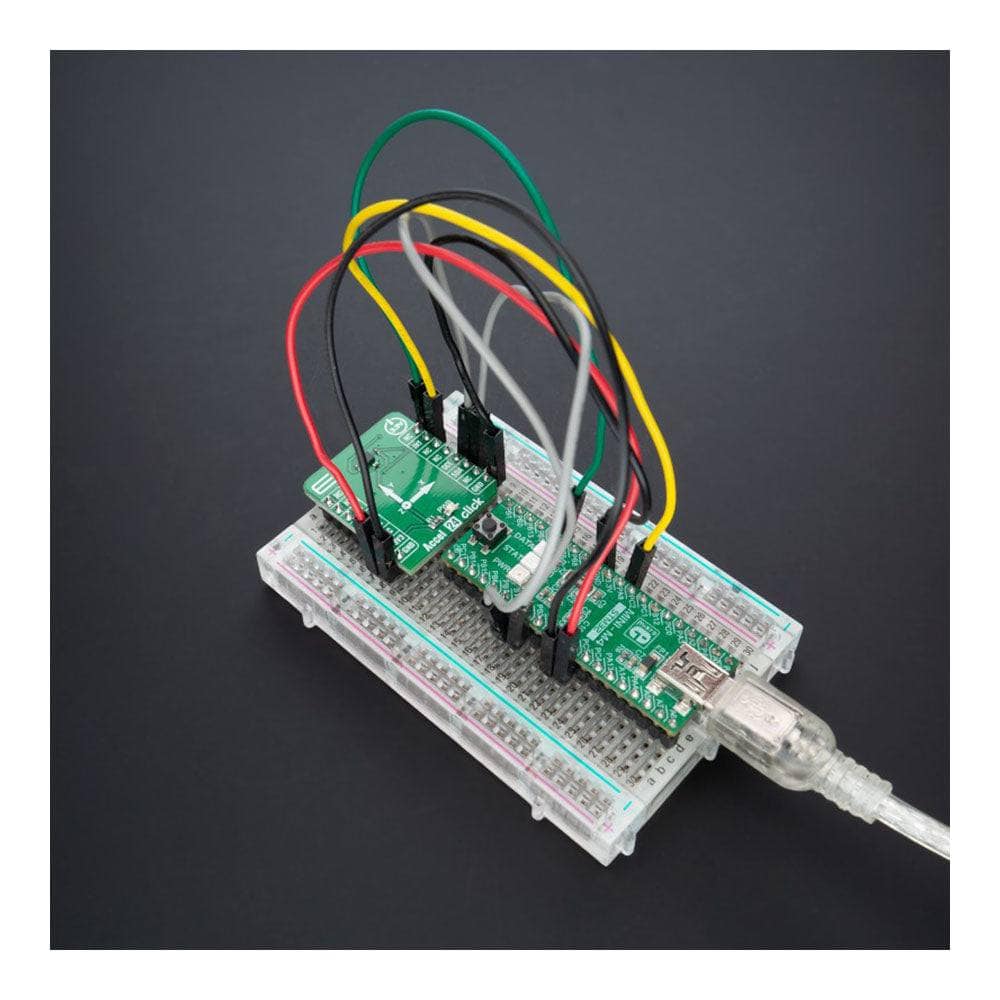
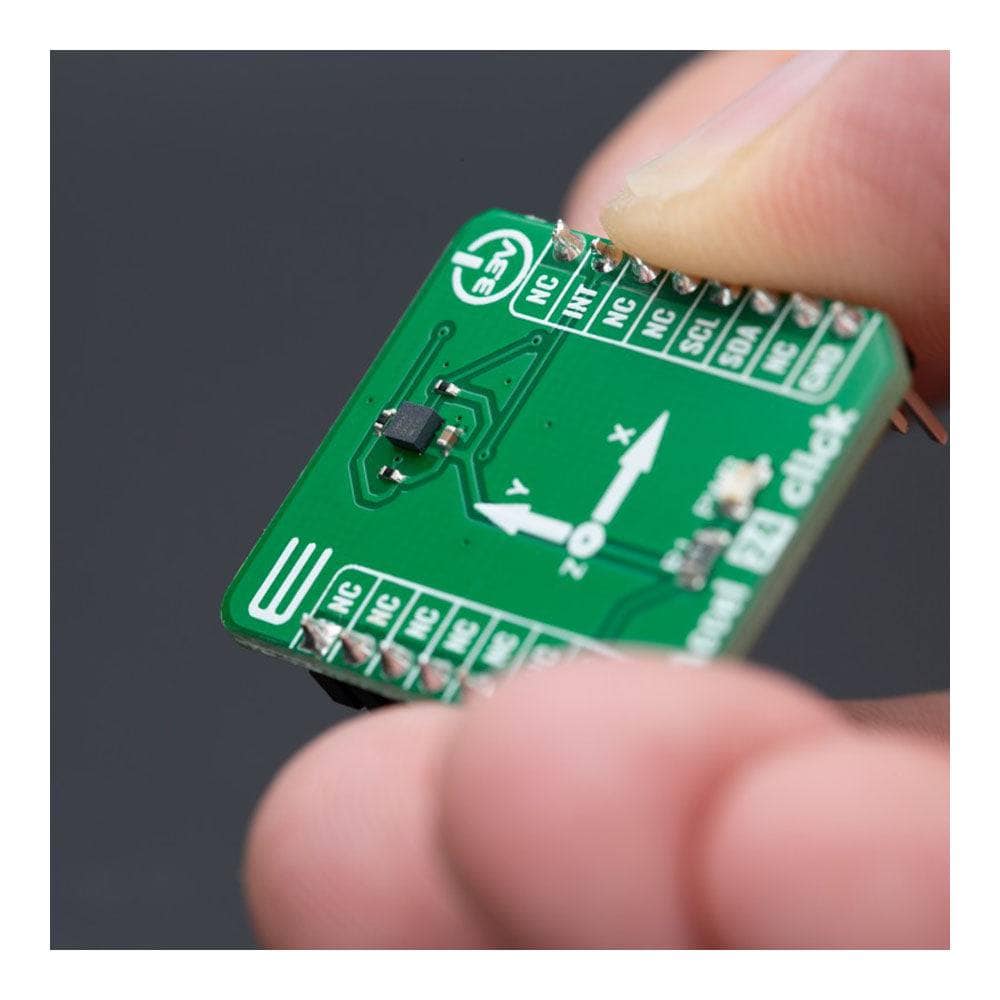
Key Features
Overview
The Accel 24 Click Board™ is a compact add-on board with an acceleration sensor. This board features the MXC6655XA, a 12-bit three-axis accelerometer from MEMSIC. It allows selectable full-scale acceleration measurements in ranges of ±2g, ±4g, or ±8g in three axes with a compatible I2C serial interface with 400KHz fast mode operation. Alongside low offset and temperature signal with high accuracy, the MXC6655XA also detects six orientation positions, X/Y shake, and shake directions with an appropriate interrupt signal for these states. This Click board™ is suitable for a wide range of information appliances, consumer electronics, household safety applications, and many more.
The Accel 24 Click Board™ is supported by a mikroSDK-compliant library, which includes functions that simplify software development. This Click board™ comes as a fully tested product, ready to be used on a system equipped with the mikroBUS™ socket.
Downloads
L' Accel 24 Click Board™ est une carte complémentaire compacte avec un capteur d'accélération. Cette carte comprend le MXC6655XA, un accéléromètre à trois axes 12 bits de MEMSIC. Il permet des mesures d'accélération à pleine échelle sélectionnables dans des plages de ±2g, ±4g ou ±8g sur trois axes avec une interface série I2C compatible avec un fonctionnement en mode rapide de 400 kHz. Outre un faible décalage et un signal de température avec une grande précision, le MXC6655XA détecte également six positions d'orientation, des secousses X/Y et des directions de secousse avec un signal d'interruption approprié pour ces états. Cette carte Click™ convient à une large gamme d'appareils informatiques, d'électronique grand public, d'applications de sécurité domestique et bien d'autres encore.
La carte Click Board™ Accel 24 est supportée par une bibliothèque compatible mikroSDK, qui comprend des fonctions qui simplifient le développement logiciel. Cette carte Click Board™ est un produit entièrement testé, prêt à être utilisé sur un système équipé du socket mikroBUS™.
| General Information | |
|---|---|
Part Number (SKU) |
MIKROE-5336
|
Manufacturer |
|
| Physical and Mechanical | |
Weight |
0.02 kg
|
| Other | |
Country of Origin |
|
HS Code Customs Tariff code
|
|
EAN |
8606027387104
|
Warranty |
|
Frequently Asked Questions
Have a Question?
Be the first to ask a question about this.

